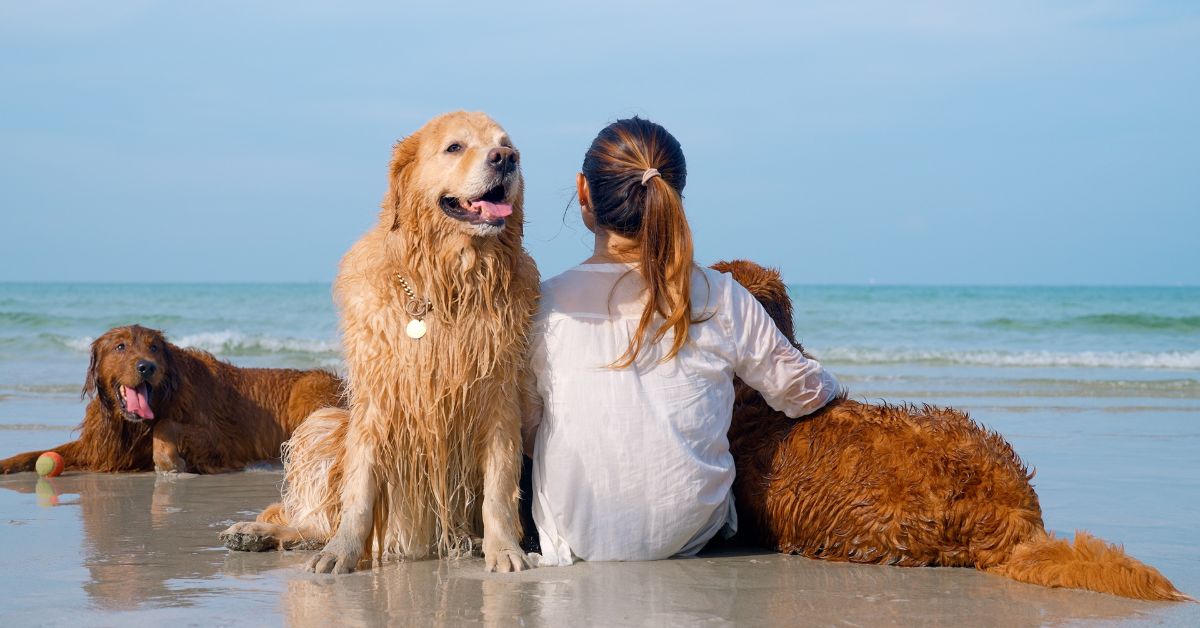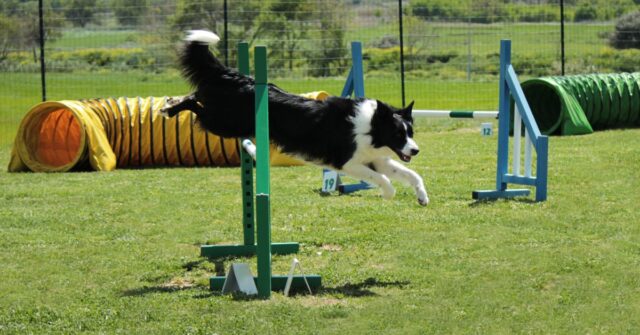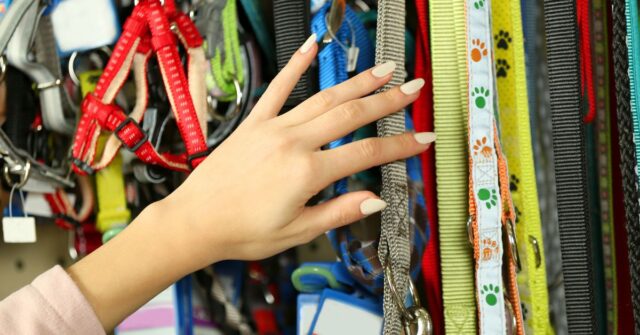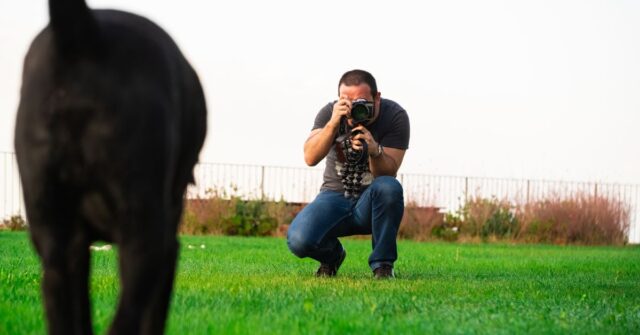Taking your dog to the beach can be a joyous experience for both of you. However, it requires careful planning and awareness to make sure your pet stays safe.
This guide will provide you with all the necessary information to have a fun and secure beach outing with your dog in Australia.
Understanding Beach Regulations for Dogs
Before heading to the beach, it’s crucial to understand the specific regulations regarding dogs. Not all beaches in Australia are dog-friendly, and each may have its own set of rules that need to be followed.
Finding Dog-Friendly Beaches
Many Australian beaches allow dogs, but some only permit them during certain hours or in designated areas.
Websites like Beachsafe and local council pages can help you find dog-friendly beaches. Always check for any signage at the beach entrance indicating specific rules.


Leash Laws and Restricted Areas
Beaches often have leash laws to protect all visitors. Some areas may allow dogs off-leash, but only during specific times.
Respect these regulations to avoid fines and ensure a harmonious environment for everyone.
Respecting Local Wildlife
Australia’s beaches are home to various wildlife, including nesting birds and marine life. Keep your dog away from these sensitive areas to protect both the wildlife and your pet. Be mindful of areas marked as wildlife protection zones.
Preparing for a Beach Visit
Proper preparation can make your beach outing enjoyable and safe. From health checks to packing the right gear, here are the essential steps to take before you go.
Health and Vaccination Checks
Visit your vet to ensure your dog is healthy and up-to-date on vaccinations. Beaches can expose dogs to various health risks, so it’s important they are protected against common diseases and parasites.
Essential Beach Gear for Your Dog
Pack a beach bag with fresh water, a portable bowl, waste bags, a leash, and a first-aid kit. Consider bringing a doggy life jacket if your pet is not a strong swimmer.
Planning Your Beach Trip
Choose a time when the beach is less crowded, such as early morning or late afternoon. This not only ensures a more relaxed atmosphere but also avoids the hottest part of the day.
Hydration and Shade
Keeping your dog hydrated and cool is vital. Dogs can quickly become dehydrated and overheated, especially on a sunny beach.
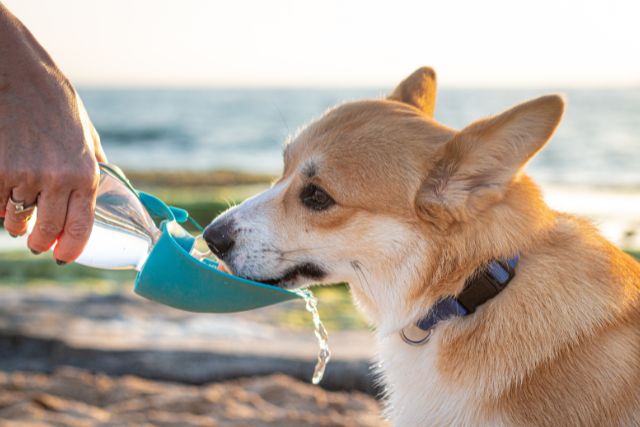

Providing Fresh Water
Always bring plenty of fresh water and a portable bowl. Encourage your dog to drink frequently, and never allow them to drink seawater, which can cause dehydration and other health issues.
Setting Up a Shaded Area
Set up a shaded spot using a beach umbrella or a portable tent. This gives your dog a place to rest and cool down, away from the direct sun.
Heat Protection Tips
The Australian sun can be harsh. Protecting your dog from extreme heat is crucial to prevent heatstroke and other heat-related illnesses.
Avoiding Hot Surfaces
Hot sand and pavements can burn your dog’s paws. Test the surface with your hand before letting your dog walk on it. Dog booties can provide protection, but it’s best to stick to cooler, grassy areas.
Timing Your Beach Visits
Visit the beach during cooler parts of the day, like early morning or late afternoon. This helps avoid the peak heat and makes the outing more pleasant for your dog.
Recognizing Heatstroke Symptoms
Watch for signs of heatstroke, such as excessive panting, drooling, lethargy, and vomiting.
If your dog shows any of these symptoms, move them to a cool place, offer water, and seek veterinary care immediately.
First Aid for Heatstroke
If your dog suffers from heatstroke, act quickly. Move them to a shaded or air-conditioned area, apply cool (not cold) water to their body, and offer small amounts of water to drink.
Contact your vet for further instructions.
Water Safety for Dogs
Many dogs love water, but ocean swimming comes with risks. It’s important to supervise your dog at all times and be aware of potential dangers.
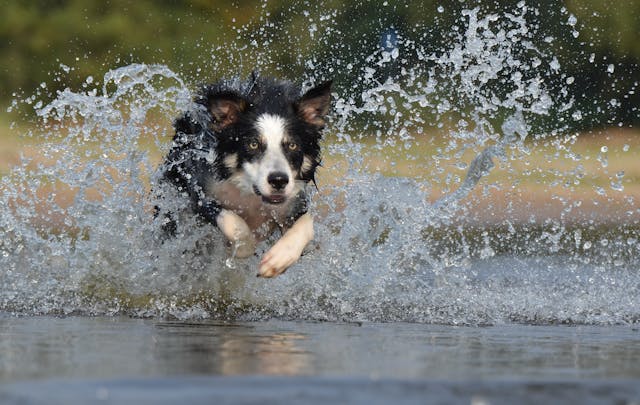

Assessing Your Dog’s Swimming Skills
Not all dogs are natural swimmers. Introduce your dog to water gradually, and never force them to swim. If they’re not confident in the water, keep them in shallow areas where they can stand.
Using Dog Life Jackets
Invest in a well-fitting dog life jacket, especially if your dog is not a strong swimmer or if you’re in an area with strong currents. This provides extra safety and peace of mind.
Identifying Safe Swimming Areas
Choose calm, shallow waters for your dog to swim in. Avoid areas with strong currents, large waves, or lots of boats and jet skis, which can pose additional risks.
Dealing with Rip Currents
Rip currents can be dangerous for both humans and dogs. Learn to identify rips by looking for calm, deeper water with fewer breaking waves.
If caught in a rip, stay calm, signal for help, and try to swim parallel to the shore.
Common Beach Hazards
Beaches can present various hazards to your dog, from marine life to sharp objects. Being aware of these dangers can help you prevent accidents.
Marine Life: Jellyfish and Other Creatures
Jellyfish stings can be painful and potentially dangerous for dogs. Keep an eye out for jellyfish in the water and on the shore. If your dog is stung, rinse the area with vinegar and seek veterinary advice.
Sharp Objects and Debris
Beaches can have sharp shells, broken glass, and other debris. Keep a lookout for these hazards and steer your dog clear of them to prevent cuts and injuries.
Other Dogs and Wildlife
Beaches can be busy with other dogs and wildlife. Ensure your dog is well-socialized and monitor their interactions to prevent conflicts and protect local wildlife.
General Beach Etiquette
Maintaining good beach etiquette ensures a pleasant experience for everyone. Follow these guidelines to be a responsible dog owner.
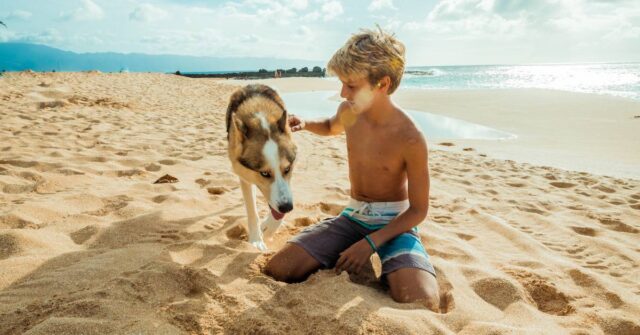

Cleaning Up After Your Dog
Always bring waste bags and clean up after your dog. Dispose of the waste in designated bins to keep the beach clean and safe for all visitors.
Keeping Your Dog Under Control
Even if your dog is off-leash, keep them under control. This helps prevent accidents and conflicts with other beachgoers and animals.
Respecting Other Beachgoers
Be considerate of other beach users. Not everyone is comfortable around dogs, so ensure your pet respects others’ space and follows commands promptly.
Emergency Preparedness
Being prepared for emergencies can make all the difference. Here are some steps to be ready for any situation.
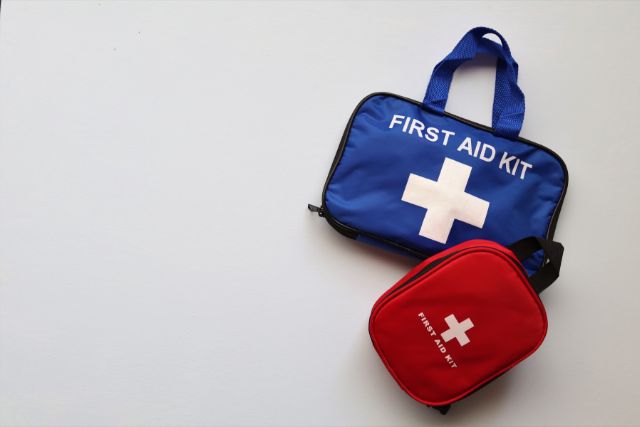

Emergency Contacts and First Aid Kits
Carry a first-aid kit tailored for dogs and know the location of the nearest vet. Keep a list of emergency contacts handy, including local animal hospitals and emergency services.
Knowing the Location of the Nearest Vet
Before heading to the beach, identify the nearest veterinary clinic. Having this information can save valuable time in case of an emergency.
Conclusion
With the right preparation and awareness, taking your dog to the beach can be a fun and safe experience.
Follow these tips to make sure your beach outings are enjoyable for both you and your furry friend. Happy beach adventures!

